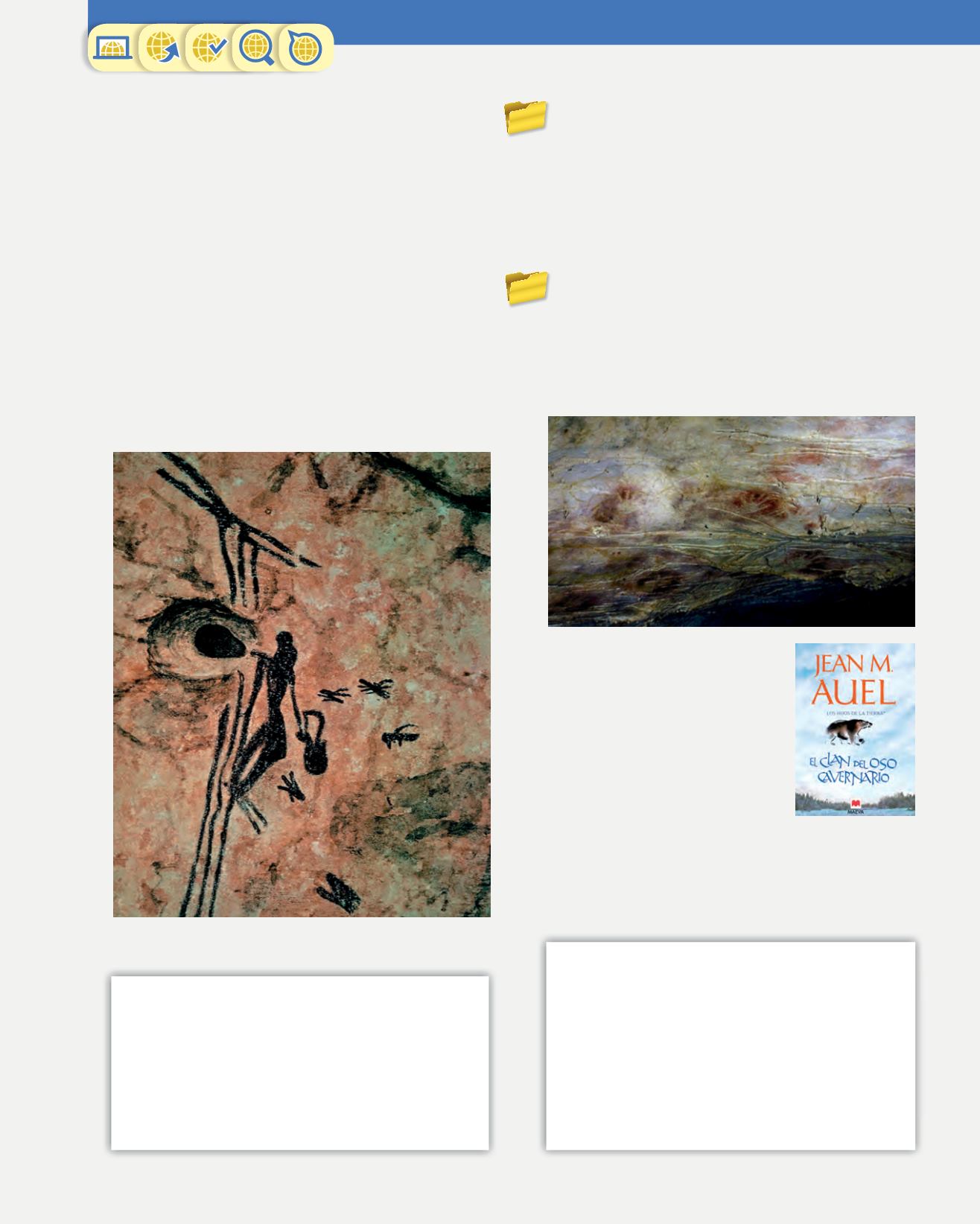
1. Prehistory: the Paleolithic age
23
1
40.
The remains which are excavated at archaeological
sites are exhibited inmuseums. Find some examples
in the following museums. Explore the different
sections and write a short summary.
National Archaeological Museum (Madrid)
Museum of London
41.
Look at this painting of hands from
El Castillo
cave
(Cantabria). This type of image is common
in prehistoric art, but we still do not understand
what it means. Research some of the possible
explanations which have been given. Summarise
them in a short essay and include your own
interpretation.
42.
The story in the novel
The Clan
of the Cave Bear
, by Jean M.
Auel, takes place in the Upper
Paleolithic. An earthquake kills
all the members of a clan of
sapiens
, except a five-year
old girl. Another clan, of
Neanderthals (the clan of the
cave bear), find her and take
her into their group. Read the
extract and answer the questions.
a) According to the text, why were the Neanderthals not
capable of adapting to their changing environment?
b) Which changes in the environment could the extract be
referring to?
37.
State which areas (economy, society, politics or
culture) the following belong to:
❚
doing a cave painting
❚
two tribes fighting each other to control a territory
❚
various clans getting together to form a tribe
❚
making a tool
❚
hunting a deer
❚
gathering wild fruit
❚
carrying an amulet
38.
Look at the cave painting and answer the questions.
a) What do you think this scene represents?
b) Which style and colours is it painted in?
c) Which period of Prehistory do you think it belongs to?
39.
Find four mistakes in this text.
1. Prehistory: the Paleolith c Period
The grey wolf clan consisted of around 170 Homo
neanderthalensis. In summer they lived in huts, but in
winter they sheltered in caves. Inside the caves, they
did paintings of the animals they hunted: bison and
mammoths. They lived from hunting, so when the
animals migrated they followed them. To keep themselves
warm they wore dinosaur hides, which they cleaned
with scrapers, and made campfires. A Homo habilis clan
taught them how to make fire.
The clan was incapable of imagining a future that was
different from the past. They could not devise innovative
alternatives for the future. Everything they knew and
everything they did was a repetition of what had come
before.
Their discoveries were made by chance and were rarely
put to good use. A species without the ability to learn
was not sufficiently prepared to survive in a changing
environment.
Jean M.
A
UEL
The Clan of the Cave Bear,
Bantam (Adapted)


